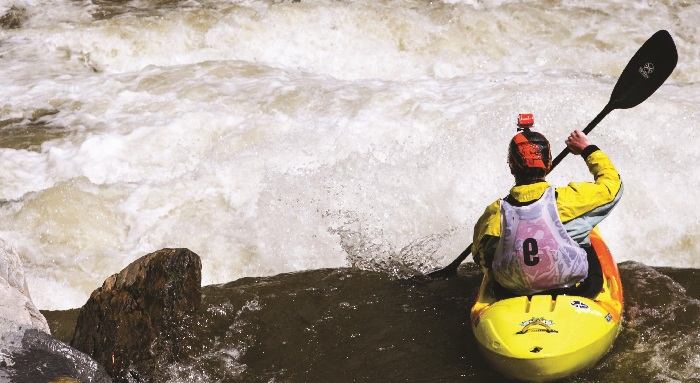One of the most important things for a whitewater paddler to know is how to scout a whitewater river. Scouting can enable beginner and intermediate whitewater kayakers the ability to paddle rivers that are above whitewater classification ability by enabling them to paddle around or portage certain rapids. Here is a guide for whitewater kayakers, canoeists, and rafters alike on how to scout a whitewater river.
Researching Whitewater Rivers
The first step of scouting really begins before you ever get to the river. Guide books, online river descriptions, and oral scouting reports are all important preparation for scouting a river. You will use this information to help guide your scouting efforts once at the whitewater river you are paddling.
Road Scouting of Whitewater Rivers
Once at the whitewater river you are about to paddle, and see how much of it is accessible by road. As you run the shuttle stop along the way to check the rapids out. Pull out your guidebook and see what it says as you scout the river from the road. Get out and climb down to the river where you can. Of course, remember that once in your kayak everything will look different. So, take note of landmarks to help you remember the rapids. If there is anything you absolutely must avoid, figure out a way to identify it when on the water. Sometimes it’s as easy as just remembering to stay left or right at a certain point to avoid a hole, strainer, or other advanced whitewater river feature.
Whitewater River Scouting
Once on the river, you will need to be aware of your surroundings and the general river features at all times. From your prior research you should know what rapids are coming up and the order you will face them. Hopefully, you are paddling the river with someone who has been on it already. The primary way to scout a river once you are paddling it is to eddy-out above a hazard, to get out of your kayak, and hike to a vantage point where you can see the rapid to determine the best line through it. Here are some things that should trigger you to eddy-out and scout a rapid.
- Be on the lookout for any landmarks that you have read about or heard about from other paddlers as a place to scout. Once the landmark is identified, be looking for the eddys leading up to the river feature you want to scout. Don’t get out too early but also don’t cut it too close to the end as you don’t want to end up missing your eddy.
- Approach horizon lines with extreme caution. Whenever you can’t see what’s on the other side of a drop you should eddy out. This is a good rule of thumb, even if you have paddled the river before or if the whitewater river scouting report hasn’t identified the particular rapid as a hazard. The reason to err on the side of caution is you never know if there is a log stuck in the rapid or a protruding rock at that particular water level. Of course, if you know the river well, you can make this determination on your own.
- Whenever you approach a long rapid that you are unfamiliar with you should get out and scout the rapid. Identify the lines you want to take and see if there is any rule of thumb you want to establish. For instance, it might be too much detail to remember each turn to make. However, you might be able to make a blanket statement such as “as long as you stay river right you’ll be fine” or “stay in the middle of the river until you pass the boulder and then cut right.” Rules of thumb will often be the best method for getting through a rapid, especially if you have a poor memory.
Boat Scouting
Another method of scouting is called boat scouting. This method should only be used by experienced whitewater kayakers and canoeists. Boat scouting is when you paddle up to a certain feature very slowly or even while paddling upstream. The goal is to be able to see the best line while still in the boat

